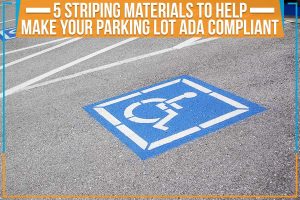Without a doubt, asphalt is the most durable and best drivable solution for residential surfaces, especially driveways. Depending on its thickness and the nature of its components, asphalt is a material that offers optimal performance, robustness, durability, and longevity.
At J. Wilson Paving, our experts use high-quality tools and equipment combined with modern paving techniques to deliver exceptional quality results. We ensure to meet all our clients’ needs and requirements and exceed their expectations. If you are looking for a reliable driveway paving contractor to build robust and high-quality surfaces for you in Arnprior, ON, connect with us today!
However, before kicking off your asphalt paving project, make sure to go through the points mentioned below to understand how asphalt paving is done.
Asphalt paving is generally done in five stages:
1. The Excavation
Excavation is the first step in laying asphalt. It consists of digging your land in order to install a solid and durable driveway. If necessary, the ground can be cleaned to remove roots or other elements detrimental to the installation.
The type of soil will determine the depth of the excavation. If your driveway is built from bitumen, for example, our experts will excavate approximately 30 to 45 centimeters of land. For sand, approximately 45 centimeters is required, while clay soil requires more excavation. We make sure to carry out a proper excavation to extend the pavement’s service life and prevent the need for early repair.
2. The Installation of a Base of Crushed Aggregates
The second step is to lay a base of crushed aggregates in the excavated area. This solid base allows the asphalt to rest on a stable foundation. Indeed, land is a natural resource, and its movements are unpredictable. The base of crushed aggregates creates a separation between the natural soil and the asphalt pavement, making the asphalt pavement durable.
Note that clay soil is more fragile than other types of soil. If the soil in your driveway is clay, laying a geotextile fabric will help. It is a fabric of artificial fibers that mimic the natural characteristics of the soil. It prevents the two soils (clay and asphalt) from mixing and affecting the stability of your driveway.
3. The Formation of a Slope
The third step is to create a slope of at least 2%. This slope is used to drain the water towards the sewer or drainage system. Otherwise, water accumulated on the asphalt can freeze during the winter season and cause cracks or even worsen existing cracks.
Our experts recommend building a small curb around the sides of your asphalt driveway to prevent the asphalt from splitting.
4. Application of One to Two Coats of Asphalt
Finally, a layer of asphalt with a temperature of approximately 270 degrees Fahrenheit is applied to the crushed aggregate foundation. This layer should be 2.5 to 3 inches thick. Using a roller compactor, our experts compress the layer to reduce its thickness to a minimum of two inches.
If heavy vehicles are regularly parked on your driveway, it is recommended that you increase the layer’s thickness to 2.5 inches. If you choose this option, you should also think about making a thicker crushed aggregate base.
5. Carrying Out Additional Work
Installing or repairing residential asphalt paving can also be an opportunity to carry out additional work to optimize your driveway. You could build an extra parking space, develop new landscaping, integrate more greenery at the back of the entrance to facilitate more privacy in your yard, etc. Our qualified professionals will take the time to listen to your ideas and provide you with appropriate advice.
At J. Wilson Paving, we provide exceptional asphalt paving and residential landscaping solutions in Arnprior, ON. Connect with us to learn about our services today!






